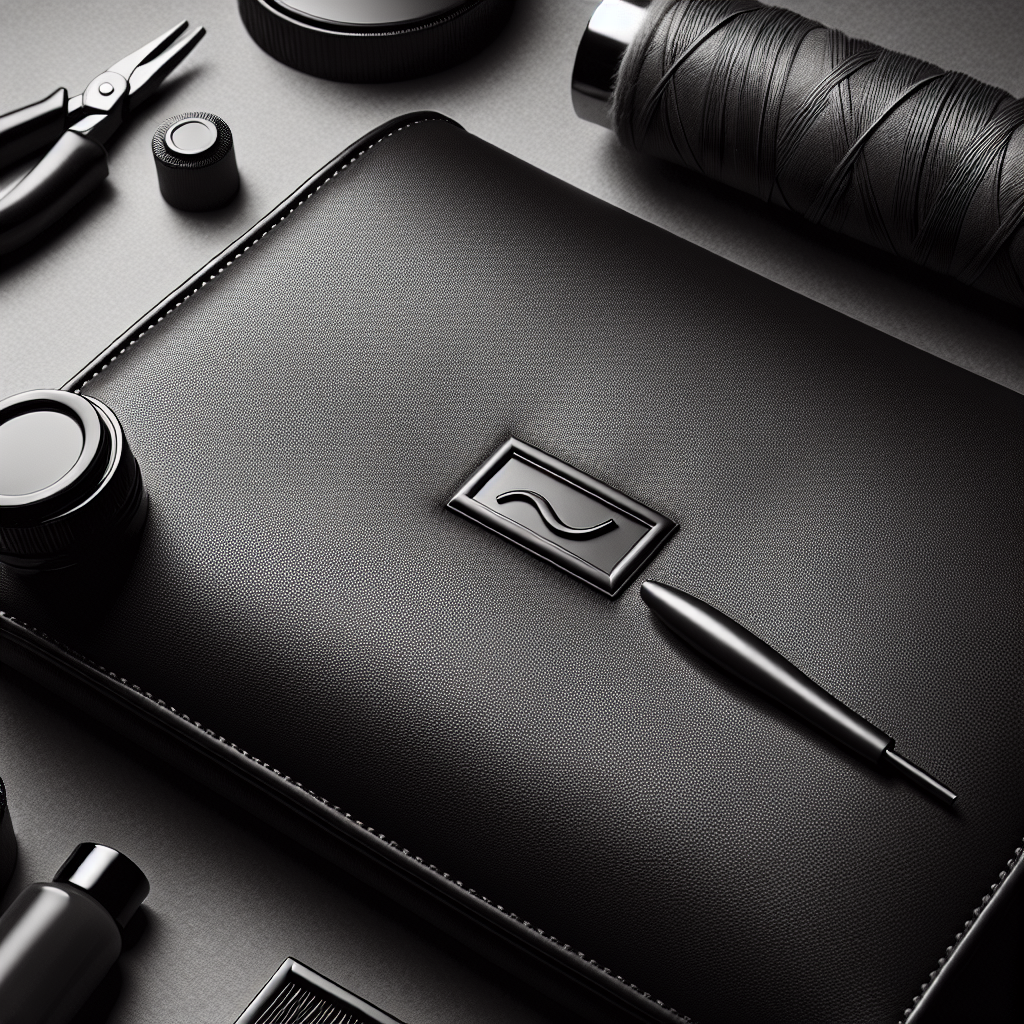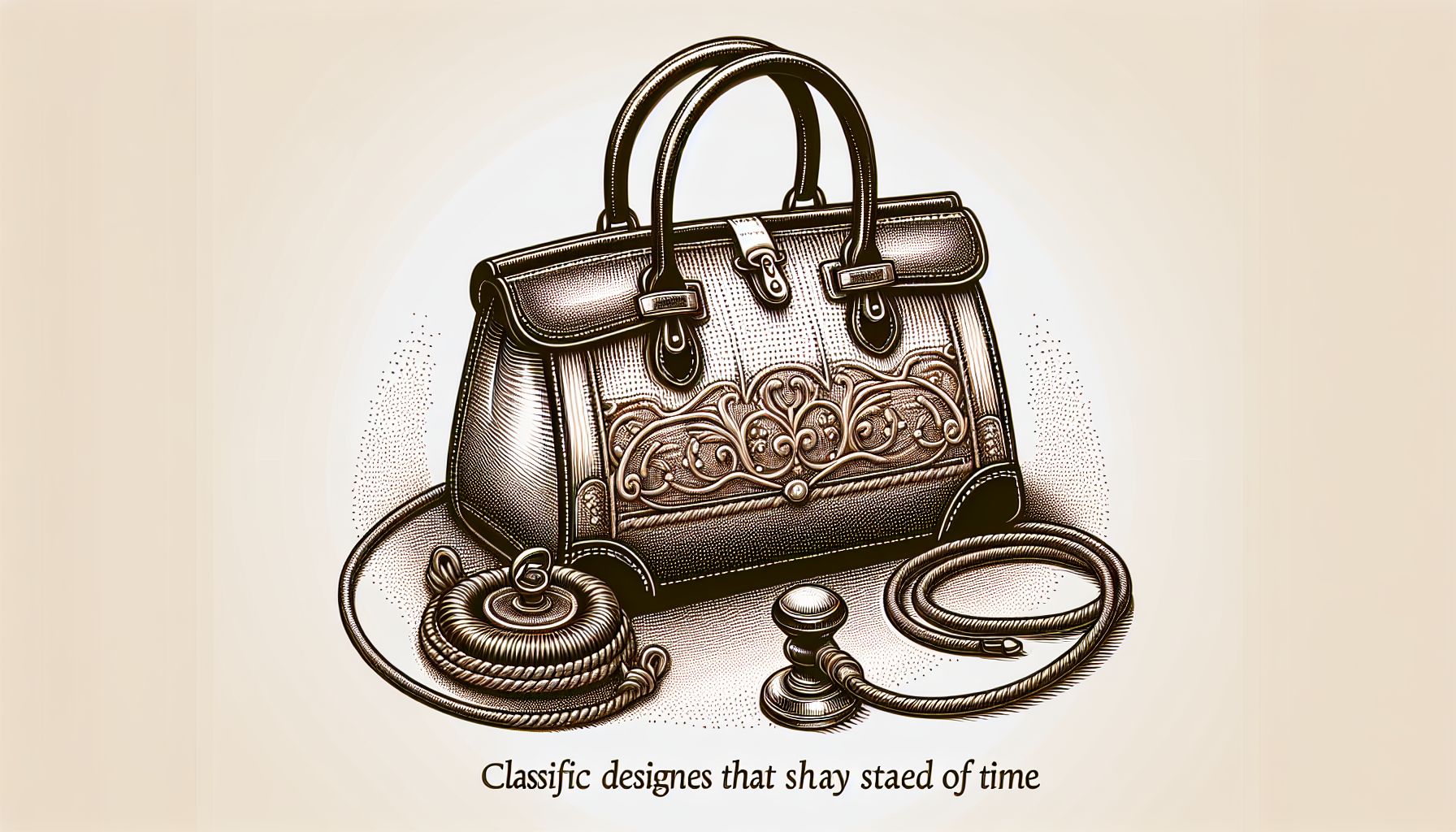How Do Logos And Branding Impact The Versatility Of A Handbag
Imagine this scenario: you spot a stunning handbag in a store display, instantly drawn to its luxurious design and impeccable craftsmanship. As you approach the item, something catches your eye – a small, meticulously placed logo that represents a prestigious brand. Suddenly, the handbag transforms from a fashionable accessory into a symbol of status and sophistication. In today’s article, we will explore the intriguing world of logos and branding and their profound impact on the versatility of a handbag.
Understanding Logo and Branding
Definition of logo
A logo is a graphic representation, typically in the form of a symbol or emblem, that serves as a visual identifier for a brand or company. It is an essential element of visual communication and plays a crucial role in establishing brand recognition and building brand identity. Logos can be simple or complex, but they are designed to be memorable and unique.
Definition of branding
Branding, on the other hand, is the process of creating a distinctive and consistent image or identity for a product or company. It involves the development of a brand’s values, positioning, and messaging, which are then communicated through various elements such as logos, colors, typography, and overall visual style. Branding goes beyond just a logo and encompasses the perception and emotions associated with a brand.
Relation between logo and branding
While a logo is an integral part of branding, it is not the only component. Logos are the visual representation of a brand’s identity, while branding is the holistic approach to creating and communicating that identity. Logos act as a shorthand symbol that instantly connects consumers to the overall brand experience and values. It is through branding that a logo becomes imbued with meaning and emotion, making it more than just a visual element on a product.
Versatility of Handbags
Understanding the concept of versatility
Versatility in handbags refers to their ability to adapt and be suitable for a variety of occasions, styles, and outfits. a versatile handbag is one that can seamlessly transition from day to night, from casual to formal, and from one season to another. It is a bag that can complement different looks and fulfill various functional needs.
Factors determining versatility of a handbag
Several factors contribute to the versatility of a handbag. One crucial aspect is the design and construction of the bag. A bag with a classic and timeless silhouette, neutral colors, and clean lines tends to be more versatile compared to trendy or heavily embellished designs. The size and shape of the handbag also play a role, with medium-sized bags and those with adjustable straps or handles offering more flexibility. Additionally, the choice of materials, hardware, and details such as pockets or compartments can impact a handbag’s versatility.
Role of Logos in Handbag Versatility
Influence of logo design on versatility
The design of a logo can influence the versatility of a handbag in several ways. A logo that is simplistic and unobtrusive allows the handbag to blend seamlessly with various styles and outfits, enhancing its versatility. On the other hand, a logo that is large, bold, or overly prominent may limit the handbag’s versatility, as it can dominate the overall look and restrict pairing options. Thus, logo design should aim to strike a balance between brand recognition and versatility.
How logo placement affects versatility
The placement of a logo on a handbag can also impact its versatility. When a logo is strategically placed, such as on a detachable charm or on the inside lining, it allows the handbag to be versatile in its branding. This means that the handbag can be used with or without the logo being displayed, depending on the occasion or personal preference. On the contrary, a logo prominently placed on the exterior of a bag may limit its versatility, as it becomes a more dominant and defining feature.
How logo size contributes to versatility
The size of a logo can have a significant impact on a handbag’s versatility. A smaller, subtle logo tends to be more versatile, as it can easily complement different styles and outfits without overwhelming the overall look. On the other hand, a large logo can create a bold statement, which may limit the handbag’s versatility to certain styles or occasions. Choosing a logo size that aligns with the intended versatility of the handbag is crucial for ensuring its broad appeal.
Role of Branding in Handbag Versatility
How branding affects handbag design
Branding plays a crucial role in shaping the design of a handbag and, consequently, its versatility. The overall brand aesthetic, values, and target audience influence the design choices made by handbag designers. For instance, a brand known for its minimalist and understated style is more likely to create versatile handbags that can seamlessly integrate into a variety of wardrobes. On the other hand, a brand focusing on bold and eccentric designs may prioritize creativity over versatility.
Influence of branding on handbag functionality
Branding also influences the functionality of a handbag, which in turn affects its versatility. Brands that prioritize practicality and usability in their branding often design handbags with thoughtful features such as multiple compartments, adjustable straps, or convertible styles. These functional aspects enhance the versatility of the handbags, allowing them to adapt to different needs and preferences.
Impact of branding on perceived handbag versatility
Branding plays a significant role in shaping consumers’ perceptions of a handbag’s versatility. A brand with a strong reputation for versatile and high-quality products will likely be associated with versatile handbags. On the other hand, a brand with a more niche or specific brand identity may be perceived as offering handbags with limited versatility. Consumers often rely on branding cues, such as visual elements, marketing messages, and brand reputation, to assess a handbag’s versatility before making a purchase.
Consumer Perception of Logo and Branding
Perception of logo importance
For consumers, logos play a crucial role in assessing the quality, authenticity, and overall appeal of a handbag. Logos can act as a visual symbol of a brand’s reputation and heritage, influencing consumers’ perception of the handbag’s value and desirability. A well-designed and recognizable logo can instill confidence and create a sense of prestige, making the handbag more appealing to consumers seeking a high-quality and fashionable accessory.
Perception of branding importance
Branding is equally important to consumers as it represents the overall image, personality, and values of a brand. A brand with a strong reputation for quality, craftsmanship, and style will often be associated with handbags that reflect those attributes. Consumers consider branding as an indicator of reliability and consistency, leading them to have higher confidence in the versatility and overall appeal of a handbag.
Influence of perception on handbag choice
Consumers’ perception of logo and branding significantly influences their handbag purchase decisions. A well-designed, recognizable logo and a consistent, compelling branding strategy can attract consumers who value versatility and style. On the other hand, logos and branding that do not align with consumer expectations or preferences may deter potential buyers, impacting their perception of the handbag’s versatility. Understanding consumer perception and aligning branding strategies accordingly is crucial for handbag brands to thrive in the market.
Brand Reputation and Handbag Versatility
Influence of brand reputation on design choices
Brand reputation plays a vital role in influencing the design choices made by handbag brands. Established brands with a long and successful history often have a recognizable aesthetic and design language that has contributed to their reputation. When designing handbags, these brands take into account their existing customer base and the expectations associated with their reputation. This can result in the creation of versatile handbag designs that adhere to the brand’s identity and resonate with loyal customers.
Contribution of brand reputation to perceived versatility
Brand reputation contributes significantly to the perceived versatility of a handbag. A brand with a strong reputation for versatility and innovation will likely be associated with handbags that possess those qualities. Consumers perceive reputable brands as having a track record of delivering high-quality, versatile products, which increases their confidence in the versatility of the handbag they are considering. A positive brand reputation can positively impact a handbag’s perceived versatility, making it more desirable among consumers.
How brand reputation can limit versatility
While brand reputation can enhance perceived versatility, it can also limit it in certain cases. Brands with a strong and distinct brand identity may prioritize maintaining their brand image over creating highly versatile handbags. This can result in designs that cater to a specific target audience or style, potentially limiting the versatility of the handbag. Consumers who prefer a more versatile and adaptable handbag may look for brands with a reputation for incorporating a broader range of styles and functionalities.
Price and Branding
The relationship between price and branding
Price and branding are often closely intertwined. Brands with a strong reputation and perceived value can command higher prices for their products. handbags from luxury brands, for example, often come with a premium price tag due to the craftsmanship, materials, and exclusivity associated with the brand. On the other hand, brands that target the mass market tend to offer more affordable handbags. The price of a handbag can influence consumers’ perception of its versatility, with higher-priced bags often being associated with better quality and greater versatility.
How price affects perceived versatility
The price of a handbag can impact consumers’ perceived versatility of the product. Higher-priced handbags are often associated with luxury brands known for their attention to detail and high-quality materials. This perception translates into consumers believing that these handbags are more versatile and suitable for a range of occasions and styles. However, it is important to note that price alone does not determine versatility, and affordable handbags can also offer excellent versatility depending on their design, functionality, and brand reputation.
Luxury brands and handbag versatility
Luxury brands have a unique position in the handbag market when it comes to versatility. While they often offer a range of designs and styles, luxury brands are also known for their iconic and timeless pieces that transcend trends. These classic designs are often seen as highly versatile and can seamlessly complement a variety of outfits and occasions. Luxury brands’ branding and reputation contribute to their handbags’ perceived versatility, making them desirable choices for consumers looking for long-lasting and adaptable accessories.
Branding and Material Choices
How branding influences material selection
Branding plays a crucial role in determining the materials used in handbag construction. Luxury brands, for example, often prioritize premium materials such as high-quality leather or exotic skins to align with their branding as exclusive and luxurious. On the other hand, brands focusing on affordability and sustainability may opt for alternative materials like vegan leather or recycled fabrics. The choice of materials influenced by branding can impact a handbag’s versatility, as different materials may have different physical properties and suitability for various occasions.
Impact of material on handbag versatility
The material chosen for a handbag has a significant impact on its versatility. Some materials, such as classic leather or canvas, are known for their durability and flexibility, making them versatile options that can withstand different usage scenarios. Other materials, such as delicate fabrics or patent leather, may limit a handbag’s versatility due to their specific care needs or restricted compatibility with certain styles or occasions. Handbag brands must carefully consider material choices to ensure their products offer the desired level of versatility.
The relationship between branding and durability
Branding can also influence the perceived durability of a handbag, which in turn affects its versatility. Brands with a reputation for high-quality products and craftsmanship often use materials and construction techniques that enhance the durability and longevity of their handbags. This association with durability can contribute to consumers’ perception of the handbag’s versatility, as they believe it can withstand frequent use and adapt to different settings. Strong branding and a focus on quality can increase consumers’ confidence in a handbag’s versatility over time.
Branding, Logo, and Handbag Styles
How logos and branding influence handbag style
Logos and branding have a significant impact on handbag style. Brands often incorporate their logos or distinctive branding elements directly into the design of the handbag, influencing its overall aesthetic. A brand known for its minimalistic and clean branding, for example, may create handbags with sleek lines and subtle logo accents. On the other hand, brands that embrace bold and vibrant branding may incorporate eye-catching logos or patterns into their handbag designs. Logos and branding elements contribute to the overall style of the handbag, which in turn affects its versatility and appeal to different consumers.
Impact of style on perceived versatility
Handbag style plays a crucial role in determining its perceived versatility. Styles that are classic, timeless, and free from excessive detailing are often considered more versatile, as they can seamlessly integrate into a variety of wardrobes and occasions. On the other hand, highly unique or trend-focused styles may be perceived as less versatile, as they may have a limited lifespan or be less adaptable to different fashion preferences. Handbag brands must carefully balance style with versatility to cater to a wide range of consumers.
Branding and evolving trends in handbag styles
Branding and logos can also influence or adapt to evolving trends in handbag styles. Brands often incorporate their logos into new and emerging styles to maintain brand recognition and relevance. This adaptability allows handbag brands to stay current and meet consumer demands for both style and versatility. By aligning branding strategies with evolving trends, brands can create handbags that are perceived as both fashionable and versatile, appealing to a broader range of consumers.
Case Studies: High Versatility Handbag Brands
Examples of brands with versatile handbag designs
Several brands are known for their versatile handbag designs. One such brand is Longchamp, which offers a range of timeless and functional bags that can effortlessly transition from day to night. Their Le Pliage collection, in particular, has become an icon of versatility with its foldable nylon construction and easily recognizable logo. Another brand is Fossil, which focuses on creating stylish and versatile handbags with functional details like multiple compartments and convertible straps.
How these brands utilize logos and branding
Brands like Longchamp and Fossil incorporate their logos and branding elements thoughtfully into their handbag designs. Longchamp’s Le Pliage collection features a small, discreet logo that doesn’t overpower the overall design, allowing the bags to blend well with different styles. Fossil, on the other hand, utilizes its distinctive logo as an accent element, adding a touch of branding without overwhelming the handbag’s versatility. Both brands prioritize creating handbags that are both fashionable and functional, aligning their logos and branding with their overall design philosophy.
Consumer response to these brands
Consumers have responded positively to brands like Longchamp and Fossil because of their versatile handbag designs. The combination of functional features, timeless styles, and well-executed branding appeals to a wide range of consumers looking for handbags that can adapt to their various needs and personal styles. By offering a balance between practicality and fashion, these brands have gained a reputation for producing handbags that are versatile, reliable, and desirable choices for consumers.
In conclusion, logos and branding have a significant impact on the versatility of handbags. Logos can influence the overall design, placement, and size of a handbag, which in turn affects its versatility. Branding, on the other hand, shapes the design, functionality, and perceived versatility of a handbag. Consumer perception of logos and branding also plays a vital role in handbag choice and perceived versatility. Additionally, other factors such as brand reputation, price, materials, style, and evolving trends contribute to the versatility of handbags. By understanding the relationship between logos, branding, and versatility, handbag brands can create products that appeal to a broader range of consumers and meet their diverse needs.




